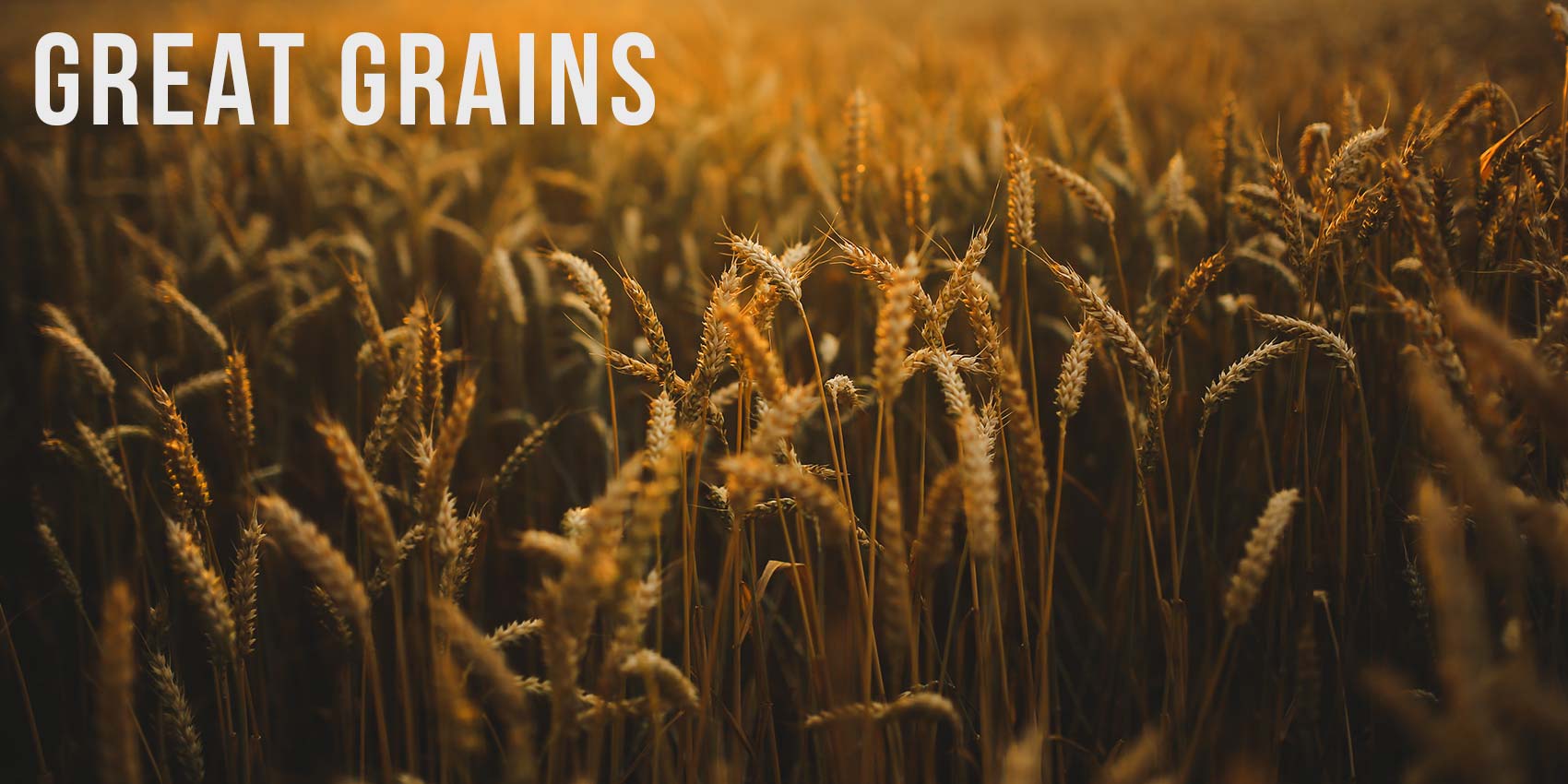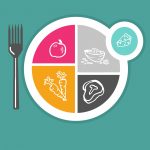14 Sep Great grains

Now you know that half of your plate (calorie intake) should have fruits and vegetables to be nutritious. What about the other half? 30% of that other half is for whole grains, aka “complex carbs.” (Remember the building blocks? Grains are mostly made up of the carbohydrate building blocks.)
So what are grains? Wheat, rice, oats, cornmeal, barley are all examples of grains. They are made up of the components of grass plants that you can eat. There are also foods like quinoa and buckwheat that are just like grains but are not derived from the grass family. This is a relatively minor distinction that you don’t need to learn about at this time;-).
Whole grains means exactly what it says: the WHOLE grain: one that is not processed and stripped of its natural husk. That husk contains a ton of nutrients and a lot of fiber.
Grains give you energy to play well against your rival team, or feel enthusiastic on a date, or focus on a test, instead of feeling like a combination of a slug and a sloth. That’s the role of the carbohydrate building block: the primary role of carbohydrates is to provide your body with energy.
Grains are also referred to as complex carbs (carbs is short for carbohydrate btw) because they are literally complex—they are made up of layers of cells or fiber of real food that takes longer to break down in the body. This is in contrast to simple carbs that break down more readily in the body. The faster the body breaks them down, the faster they spike the blood sugar levels. As you will learn, you want to have stable blood sugar all day long (and stay in the zone) without those nasty spikes (highs and lows).
In general, simple carbs offer less nutrients than complex carbs. Food manufacturers refine, or strip down, the food to remove many of their healthy nutrients and fiber. Some examples of simple carbs are:
- WHITE flour products, like a plain bagel
- WHITE sugar products, like a donut
- WHITE rice or pasta
- Less nutritious foods, like Oreos or Goldfish
Many simple carbs turn to sugar very quickly in your bloodstream, causing a faster and greater rise in your blood sugar and insulin levels. Why is that unhealthy? You see, your blood is like Goldilocks when it comes to sugar balance. Too much sugar and you are bouncing off the walls. Too little sugar and you feel like collapsing on the floor. A balance is what keeps you going strong and feeling fab.

DID YOU KNOW? Too much sugar in your blood on a regular basis can lead to: Type II diabetes and obesity. (To read about the risks of diabetes and obesity check out Nutrition II-Risks)
Notice that simple carbs and junk food (foods that are literally like adding junk to your revved up engine) are not even listed on MyPlate. That’s because they don’t add any nutritional value to your overall health and generally should be avoided. They are referred to as “empty calories” as they don’t provide anything other than quick energy but they do count towards your overall calorie count.
A lot of simple carbs and junk foods are processed foods. What’s that? To refine or process a food is to make a “deliberate” change to a food before it is consumed. Generally, processing foods removes key ingredients and vitamins, nutrients, and fiber. Why process foods? Because it increases the shelf life of food and people often say the foods taste better (!) but that is debatable for sure.

DID YOU KNOW? Manufacturers often try to add back some “healthy” ingredients when they process foods—they call this “enriched” but the end result still lacks the nutrients found in the ORIGINAL food. They often enrich foods (cereals, breads, crackers etc) with iron and vitamin B.
So what does the fiber found in more complex (unrefined) carbs actually do for you? Well, for starters, fiber helps you have bowel movements (yes, poop!!), and thus it keeps your gut (intestines) healthy. You do not want to be constipated – you know, that feeling like you are trying to pass a bowling ball out your butt. And we’re not trying to be gross – this is natural and important stuff to know. You definitely want to “go” everyday – preferably it should look like bananas and not like grapes (grapes mean you need more fiber and more water!) (Had enough of this conversation? OK, we’ll go back to whole grains, but remember, you must go regularly!)
AT BREAKFAST: Look for whole grains starting with your very first meal of the day. For example, a good whole grain cereal at breakfast is oatmeal—when it’s NOT processed (instant oatmeal is processed). In addition, many popular brand cereals are processed, so read the box label to see if they contain whole grains. In general, the higher the fiber content, the more whole grains so look for a high fiber cereal. (Tips on label reading in Nutrition II)

DID YOU KNOW? Manufacturers often try to add back some “healthy” ingredients when they process foods—they call this “enriched” but the end result still lacks the nutrients found in the ORIGINAL food. They often enrich foods (cereals, breads, crackers etc) with iron and vitamin B.
AT LUNCH: Bread is a processed food too, but as long as it has 3-5 grams of fiber per slice it is considered a whole grain. Look for products that say 100% whole grain on the package. You should be able to literally see the obvious whole grains in bread (and cereal and crackers)!
AT DINNER: If you are going to have bread with dinner, choose healthy whole grain, rich-in-fiber bread. If you are having pasta or rice, try to choose those that are high in fiber. Choose brown or wild rice, and look for a whole wheat pasta or even one made with spinach!




Post Question:
What do you eat for breakfast? What kind of grain is in it if any? Whole or processed?
Answer the post question here
What's being said